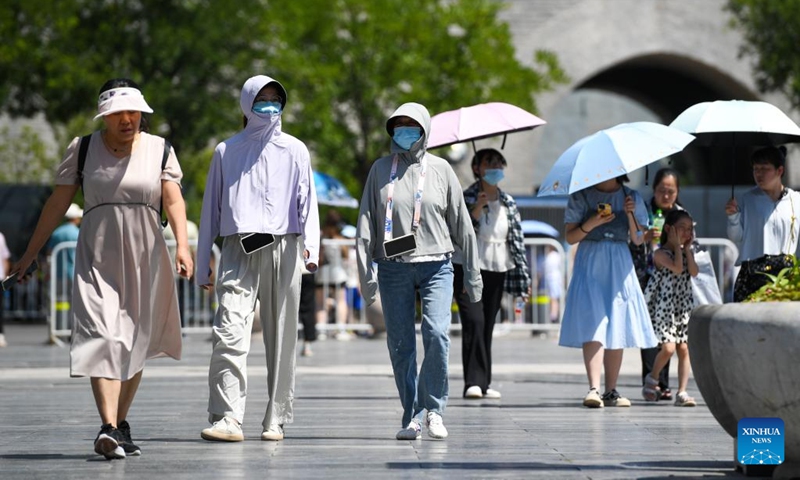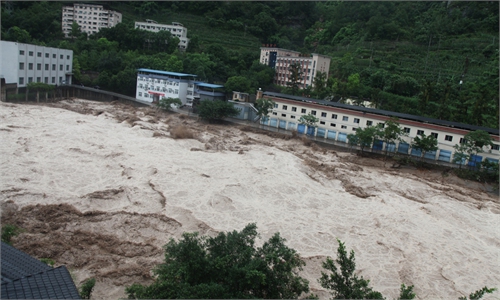Chinese meteorological authority closely monitoring extreme weather; official expresses concern over North China's drought

People visit the Qianmen street in Beijing, capital of China, July 6, 2023. Beijing issued a red alert for high temperatures on Thursday, the highest in a color-coded alert system, as temperatures in most parts of the city are expected to rise above 40 degrees Celsius. This is the second red alert for high temperatures issued by the national capital this summer.(Photo: Xinhua)
China is closely monitoring the extreme weather and record heatwaves across the country and is doubling down on nationwide forecast capacity, according to an official from China's National Meteorological Center (NMC) who spoke to the Global Times. The official also expressed concern over the severe drought in North China, potentially leading to electricity shortages.
On Thursday, Beijing's meteorological authority extended the red alert for high temperatures, the highest level in the color-coded alert system. Temperatures in most parts of the city are expected to rise above 40°C. This marks the second red alert for high temperatures issued by the capital this summer.
Meanwhile, rescue work is still ongoing in Wanzhou, Southwest China's Chongqing Municipality, after heavy rain led to 17 deaths and two people being reported missing as of Thursday. The Wanzhou authority stated that the maximum precipitation reached 261.2 millimeters.
China allocated 320 million yuan on Wednesday from its central natural disaster relief funds to support flood and geological disaster relief work in regions including Chongqing and Sichuan.
Dai Kan, deputy head of the NMC, mentioned that the authority is closely monitoring extreme weather across the country. He emphasized the need for local authorities to strengthen their forecast capacity in addition to monitoring. Dai also expressed concern about the drought in North China, which may potentially lead to electricity shortages.
China on Friday issued red alerts for high temperatures for 108 cities, of which 71 are in North China's Hebei province.
The water resources department of North China's Hebei province reported on Wednesday that many parts of the province are experiencing varying levels of drought, impacting 750,000 hectares of field crops. Media reports indicate that the average rainfall in Hebei this year is only 123.3 millimeters, 13 percent less than usual. In June, the province received an average precipitation of 29 millimeters, 60 percent less than the same period in previous years.
According to the National Climate Center (NCC) of China, the country has recorded the highest number of hot days in the past six decades. The occurrence of multiple heatwaves affecting the country's northern cities is extremely rare.
Local authorities in central China's Hunan Province reported on Wednesday that the water level in Dongting, China's second-largest freshwater lake, is lower than previous years during the 2023 main flood season.
The China Electricity Council stated that this year, the maximum load on the grid will reach 1.37 billion kilowatts, 80 million more than last year. The council predicts supply and demand of electricity will be balanced in China this summer. To cope with the surging demand for electricity, the State Grid has recently put several power grid projects into operation.
During a forum at the World Artificial Intelligence Conference in Shanghai, Dai mentioned that the quality of the current forecast system has not yet reached its optimal level, and new AI technologies provide opportunities to meet this challenge. The NMC has developed an AI model for weather forecasts and warnings, including kilometer-scale short-term precipitation forecasts based on the gap model.


